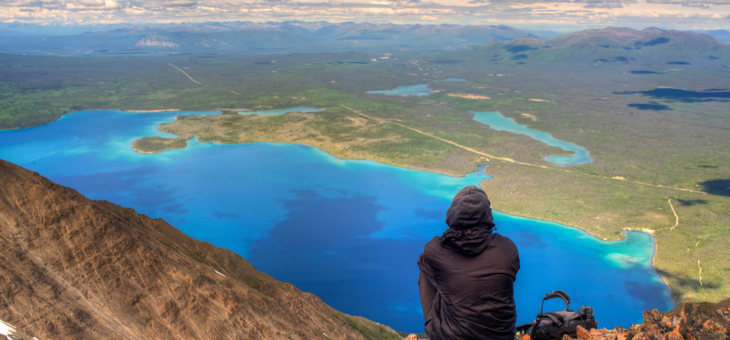While health and safety continue to be a top priority, Canada’s vast national parks, epic mountain ranges and immense waterways are exploding in an autumn frenzy of colour and wildlife, reminding Aussie travel lovers that big, beautiful Canada is looking forward to welcoming visitors when the time is right – guided by research, health regulations and clear border guidelines.
The 48 national parks spread across the country offer outdoor adventures of all kinds and a chance to lose yourself in the simple majesty of nature.
We asked our friend at Destination Canada, Pip Macken, to share some of Canada’s most magnificent natural phenomena.
Fundy National Park, New Brunswick
Highest tides in the world? Tick!
Sea creatures galore? Tick!
The Bay of Fundy has a lot to be proud of. Not only does it boast the highest tides in the world and is the summer feeding area for half the population of the North Atlantic right whales, it is also the site of one of the greatest extinction events the world has ever known – the Triassic/Jurassic extinction.
Up there in biodiversity with the Amazon Rainforest, the Bay of Fundy is recognised by UNESCO with two designations: a Biosphere Reserve and a World Heritage Site (Joggins Fossil Cliffs).
When the Bay of Fundy’s massive tides recede at the Hopewell Rocks, they leave behind a field of mud, sand and seaweed teeming with fascinating sea creatures. Visitors can pull on gumboots and pick their way through rock crabs, sea snails, periwinkles and limpets.
The Hopewell Rocks is a place to pause and appreciate a remarkable story interwoven through time, tide, and the intricacies of nature. A place where you can actually walk on the ocean floor, and then kayak six hours later at high tide, 12m above sea level at the very same spot!
Lake Superior, Ontario
There’s a reason Lake Superior is referred to as an inland ocean. It is as vast as it is gorgeous. Called Gitchi Gummi, or ‘the Big Lake’, by the Anishinaabe people of the region, the Lake Superior National Marine Conservation Area will soon be recognised as one of the largest protected areas of freshwater in the world.
Guided tours are recommended as Lake Superior has erratic weather patterns, similar to the ocean, and is large enough to create its own weather. But the views and geology are worth a potentially tempestuous experience and storm chasers won’t be disappointed.
The region features unique geological formations such as columnar basalt outcroppings, geodes and stromatolites (fossilised blue-green algae from the earliest periods of life on Earth). At 2.7 billion years old, some of the world’s oldest-known rocks can be found on the Ontario shore, wearing the scars of many winter storms.
Kluane National Park, Yukon Territory
Kluane National Park, in Canada’s northwest Yukon Territory, is a land of extremes. The park is home to Canada’s highest peak, the 5959m Mount Logan, along with 17 out of Canada’s 20 tallest mountains.
The largest internationally protected area on the planet, the 21,980 square-kilometre Kluane is nearly four times larger than Banff National Park in Alberta. Between the massive mountains lie the largest non-polar glacial icefields in the world, while the valleys below provide an abundant home for thriving wildlife, including grizzly bears, Dall sheep, mountain goats, caribou, black bears and wolves.
Travellers from around the world flock to Kluane National Park to hike its alpine passes, raft alongside glittering glaciers and mountain bike along old mining roads and trails.
Wood Buffalo National Park, Northwest Territories and Alberta
Canada’s largest park and the world’s second largest protected area, the stars shine brightest at Wood Buffalo National Park. In 2013, the Royal Astronomical Society of Canada designated Wood Buffalo National Park the world’s largest Dark-Sky Preserve, safeguarding this habitat for many owl species, bats and other nocturnal animals.
Restricted artificial light means visitors to the park see the constellations come to life and the dancing green and reds of the northern lights ripple across the night sky from late August to February. Gazing upon this astronomical masterpiece while owls and loons serenade you in the distance is nothing short of life changing.
Would you like to visit or return to Canada someday soon?
If you enjoy our content, don’t keep it to yourself. Share our free eNews with your friends and encourage them to sign up.
Related articles:
https://www.yourlifechoices.com.au/travel/destinations/top-five-tips-for-touring-toronto
https://www.yourlifechoices.com.au/travel/destinations/canadas-wonderful-wine-valley
https://www.yourlifechoices.com.au/travel/destinations/pandemic-postcard-from-ontario

